I haven’t written in the past couple of weeks because I’ve enjoyed a little time off, away from the office. People are always telling me that I should take advantage of that time to recharge. To turn my brain off entirely. To think of anything but work.
The truth is, that’s not what happens with me, and I wouldn’t really have it any other way.
Sure, I relax. I spend quality time with my family. I inhale books of all sorts. But in those quiet moments away from the hustle and bustle of day-to-day meetings, managing projects, and putting out fires – I also find a special kind of clarity. It’s my day-dreaming strategy time, when I ask myself some larger questions about my own business and those of my clients.
This time around, the big question I was grappling with was growth. What am I going to do over the next year to help all of my clients achieve aggressive growth? My conclusion was this: There is no one magic bullet to guarantee sustainable and predictable revenue. What every business needs is a personalized and fully optimized growth machine.
The Good News
You may not know it yet, but if you have a website, you have a growth machine. And if you optimize that growth machine, you can generate revenue for your business, even while you’re doing other things.
But maybe you’re already there. Maybe your website is already winning you customers like the 24/7 salesperson it has the power to be. The good news is that there is probably much more where that came from. Let me explain.
Digital Marketing Growth Tactics
There are many ways to bake a cake, and many digital marketing tactics you can use to grow revenues. Here are just a few examples:
- Attract more visitors to your site
- Attract a different type of visitor to your site, one that is more in line with your offering and more likely to become a customer
- Make your site more engaging to visitors, so that they stick around and even return – giving you the chance to turn them into customers
- Improve your site’s conversion rate, so that more of your visitors turn into customers
- Increase customer referrals, so that each new customer translates into more revenue
Any one of these growth tactics, on its own, can significantly increase your revenue. But here’s the key:
Don't settle for just one.
Your Growth Machine
People in sales and marketing love talk about the “sales funnel”. After years of using it myself, I’ve decided that I don’t like that analogy. The term suggests a static object over which you have little control, except perhaps to patch up a hole or two. In fact, nothing could be further from the truth. Your growth machine is a sophisticated engine with multiple components, all of which you can continually calibrate and optimize.
Far from helpless in the process, your role is to monitor each component of your growth machine and to continually improve it. But every time you do make improvements to one of the levers of your growth machine, you’ll realize growth. Make continual, incremental improvements to all your levers, and the results multiply. If you don’t, you’re leaving money on the table.
Everyone’s growth machine is somewhat different. Are you a B2B or B2C? Do you have e-commerce capabilities? Is your sales cycle long or short? All these variables can influence what your growth machine looks like.
This illustration depicts a typical growth machine. Let’s quickly look at its eight key components and how you can optimize them.
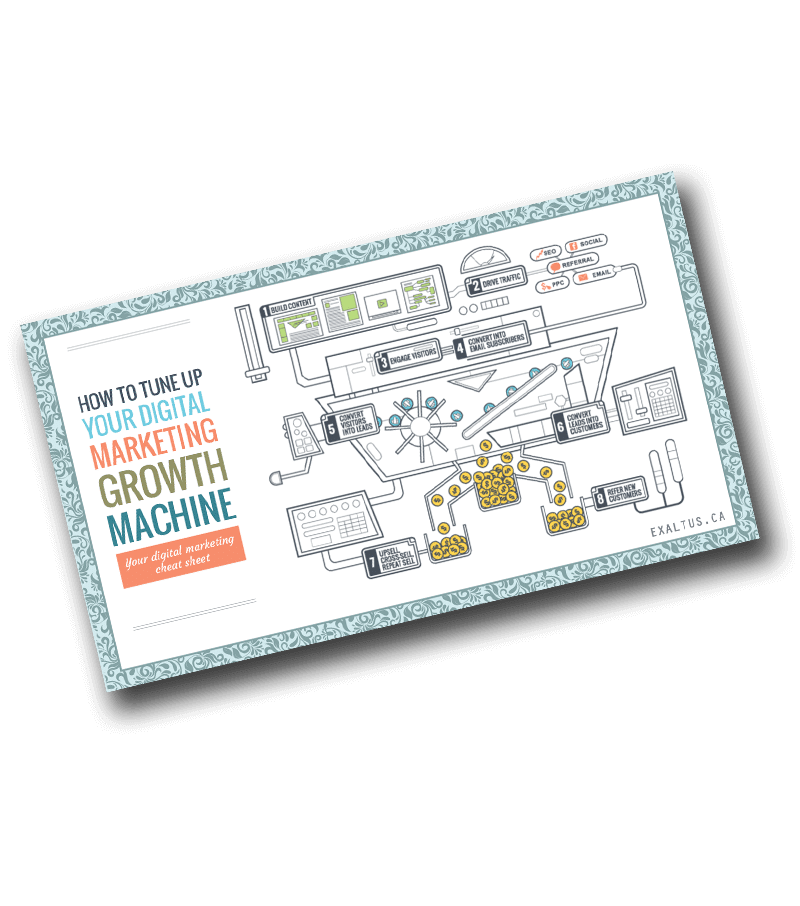
1. Build Content

Content is to your growth machine what logs are to a wood-burning stove: Nothing much happens without it. Your machine needs many different types of content to thrive. Here are a few content ideas:
- Product/service web pages that describe your offering and the value it brings, and help address your prospects’ concerns or objections
- Blog posts that attract your ideal customer without directly promoting your offer
- Other visual assets (like videos, infographics and online presentations) that engage your visitors, and which they are more likely to share on their social channels
- Lead magnets – or free resources that visitors can download in exchange for their email address
Measurement & Fine Tuning
Set content marketing goals. Cover all your bases with content
- for your different types of customers
- that maps to your different offerings
- in a variety of formats that your prospects enjoy
- around keywords that are highly searched
2. Drive Traffic

Your sources of traffic should be varied and plentiful. Here are a few great sources of website traffic you should pursue:
- Organic traffic from people who find your on search engines (here are some great SEO tips to get you started)
- Social traffic (from Facebook, Twitter, Linkedin, Pinterest and/or Instagram, depending on your audience)
- Referral traffic from relevant, quality sites that link to you (here are tips about how to boost your referral traffic)
- Email marketing – repeat visits from your email subscribers
- Paid advertising traffic (E.g. from AdWords and Facebook ads)
Measurement & Fine Tuning
Take a look at your Google Analytics and monitor visits and visitors by Source and Medium. Then:
- Check out the pages they are visiting.
- What can you do to increase each source of traffic?
- Work to develop each traffic medium through its own targeted strategy.
Does it sound overwhelming? Look for ways to optimize your efforts. Checklists are your friend. Here’s one that will help you get the most possible traffic from each piece of content you create.
3. Engage Visitors

Here, your goal is to get your visitors to stick around after landing on your site. There are countless steps you can take to improve engagement. Here are just a few:
- Make sure your site is mobile friendly
- Be strategic with internal linking to related content
- Keep your site speedy
Measurement & Fine Tuning
Use Google Analytics to monitor metrics like the Bounce Rate, Time on Page, %Exit. Start with pages where these metrics are poor and make incremental improvements on an ongoing basis.
4. Convert Visitors to Email Subscribers

Having your visitors subscribe to your email list is a great way to build a one-on-one long-term relationship with them.
There’s so much to say about how to grow your email list that I will leave the bulk of it for another post. For now, make sure that you:
- Create valuable lead magnets that visitors won’t be able to resist
- Promote your freebies with calls to action throughout your site – on dedicated opt-in pages as well on high visited pages and blog posts
- Make sure your calls to action clearly communicate the value of signing up
Measurement & Fine Tuning
In Analytics, set up conversion goals to monitor the number and percentage of visitors who sign up to your email list. Learn from your findings – e.g. which lead magnets were most successful? Which types of calls to action? Conduct A/B testing on your call-to-action design, retire the underperforming version, add a new variation. Rinse and repeat.

5. Convert Visitors into Leads

Conversion rate optimization (CRO) is a field onto itself. You can boost conversions by removing uncertainty, creating a frictionless experience and fostering trust. Here are some great tips to get you started.
Measurement & Fine Tuning
Define conversion goals for your site in google analytics. If your site is e-commerce enabled, a conversion might be a sale. If you’re B2B, a conversion could be the completion of a quote request form.
One thing I like to do for clients is to study their key conversion paths – the combination of where the traffic is coming from (e.g. Google organic) and the page it’s landing on (e.g. their Product landing page).
Across all key paths I analyze traffic and conversion stats. I look for two scenarios:
- High traffic and low conversion: I take steps to improve the pages conversion rate
- Low traffic and high conversion: I look for ways to boost traffic to that page from that and other traffic sources.
6. Convert Leads into Customers
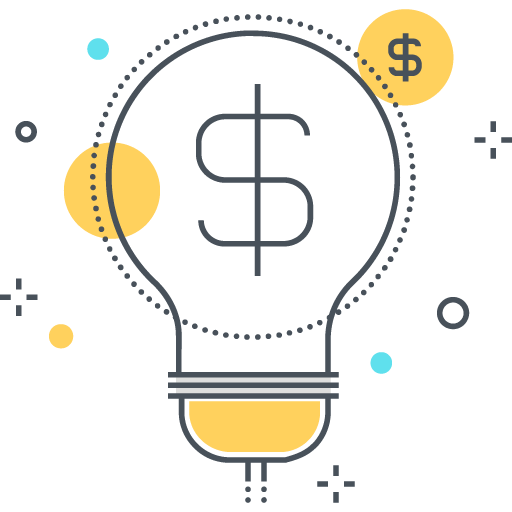
The steps you take to convert your prospects into sales will vary greatly, depending on your business. If you do a lot of face-to-face meetings, maybe you need a better sales presentation. If your customers make their decisions online, try adding more case studies to your website. Or maybe an ROI calculator would tip the scales in your favour.
Measurement & Fine Tuning
Keep track of your win and lose rates. Find out why you lost those prospects who decided to go another route. Is there a problem you need to address? Could you do a better job of handling objections? Maybe you’re targeting the wrong person? Find and fix the problem.
7. Upsell, Cross-Sell & Repeat

Here is where you use one sale as a launch pad for additional revenue. Look for ways to incentivize your customers to upgrade to a larger package, or to purchase your other solutions. At the very least, leave them so delighted with the experience of buying from you that they come back again and again.
Measurement & Fine Tuning
Track your Upsell rates, cross-sell rates and retention rates. Talk to or survey your customers to find out where you can improve and what it would take for them to increase their investment with you.
8. Get Referrals

Referrals are one of the most powerful sales and marketing tools you have. Studies have shown that referrals are the most important factors influencing the average purchase decision. And they are certainly a low-cost sales tool. Here are more reasons to pursue referrals, and some great tips for getting them.
Measurement & Fine Tuning
Ask each customer how they heard about your company. Flag your referrals and identify which of your customers were your champions. Survey the customers who never referred a customer, and ask them what improvements you could make to make them more likely to refer.
How Do You Do It All?
I’m hoping I’ve convinced you that there are many, many actions you can start taking today to achieve the revenue growth you’ve always coveted. The question is: have I overwhelmed you?
Don’t be overwhelmed. This is a good thing. It means that there is always more to do to elevate your marketing.
But Rome wasn’t built in a day. And you’re not going to build a perfectly optimized growth machine on day 1, either.
Here’s a good way to start:
- Set up your measurements and a dashboard or two to track performance.
- Prioritize. Look for areas where a) you can more easily make improvements and b) your actions will have the greatest impact.
- Look for ways to get more bang for the buck – actions that you can take that will create improvements in many areas at once.
- Shoot for small incremental gains – not complete overhauls. Building an intelligent content marketing dashboard can help you flag the incremental improvements that will have the most impact.
- Get some help from people with experience. Contact Exaltus to help you fine-tune your growth machine.
Over To You
I’d love to hear about your growth machine. Where have you been focusing? Are you neglecting any areas? Have I mentioned any areas you would like to improve? Have I left out a key area? Let me know in the comments!
And if you’re looking for help with your content marketing, check out our content marketing best practices for small business, find out about our Blog in a Box plan, or contact Exaltus today!

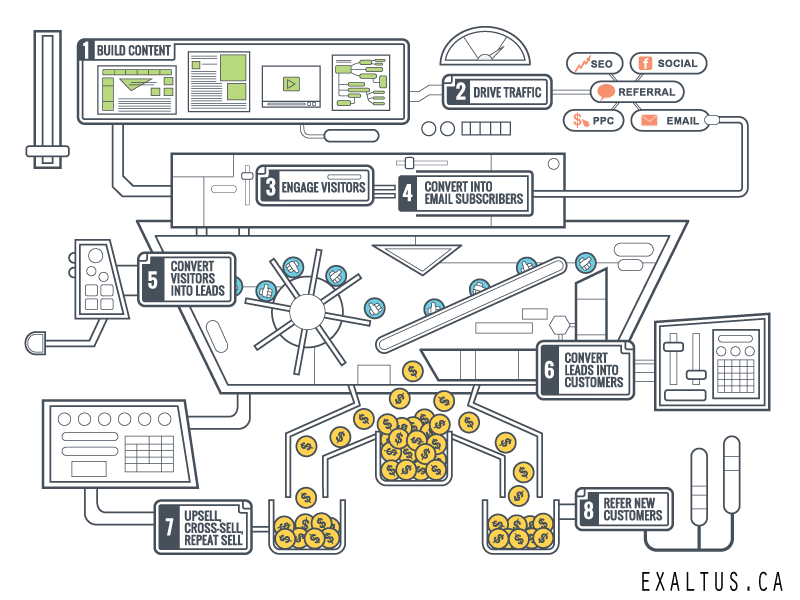
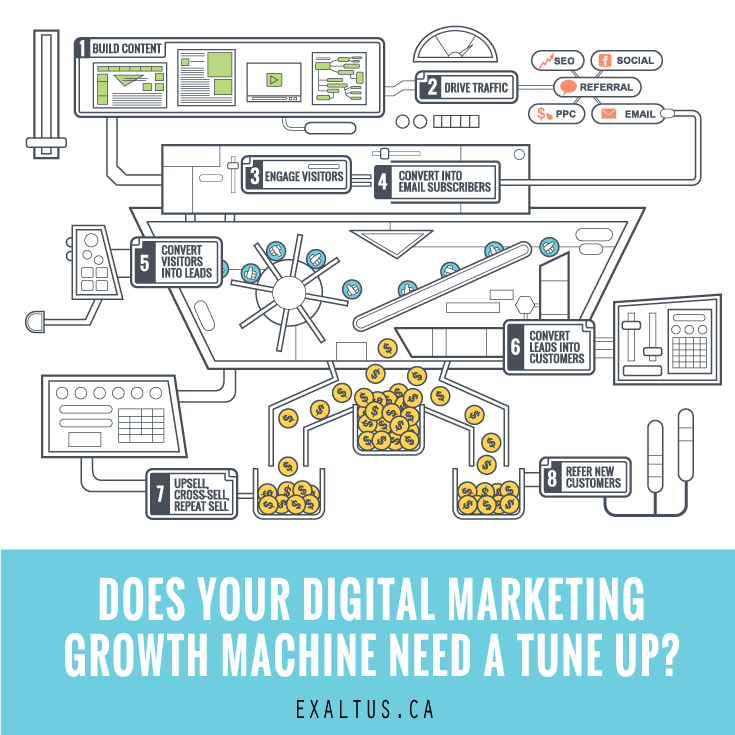
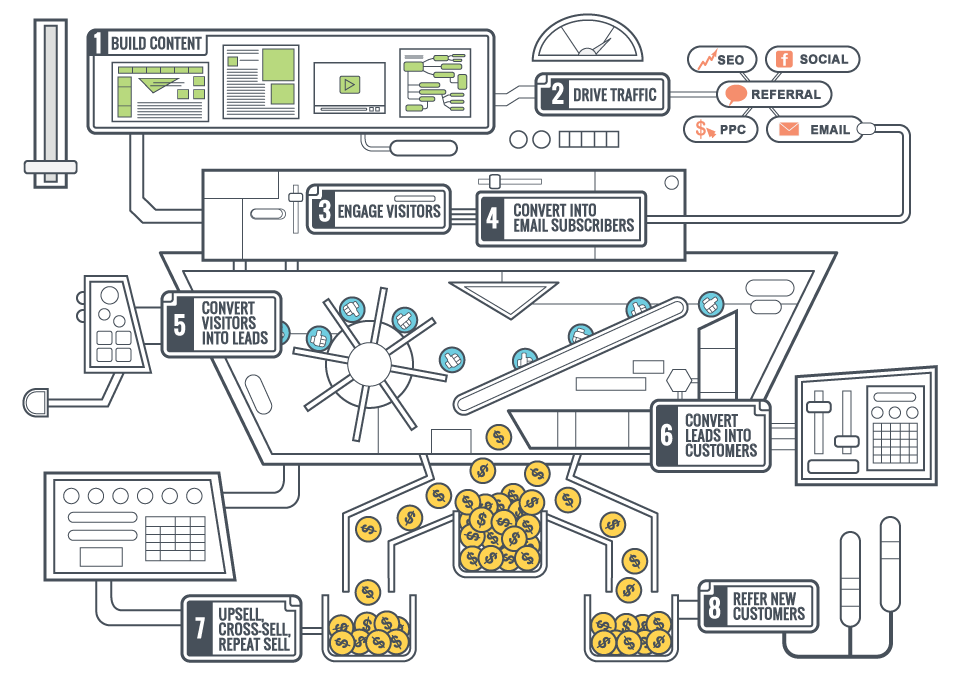


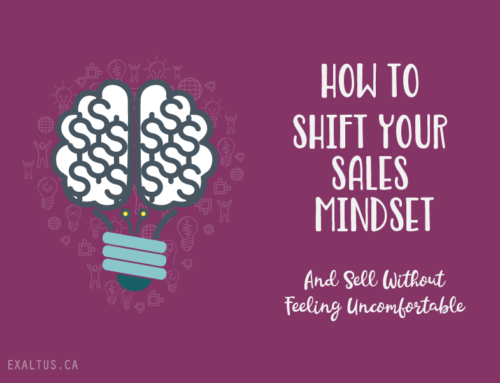
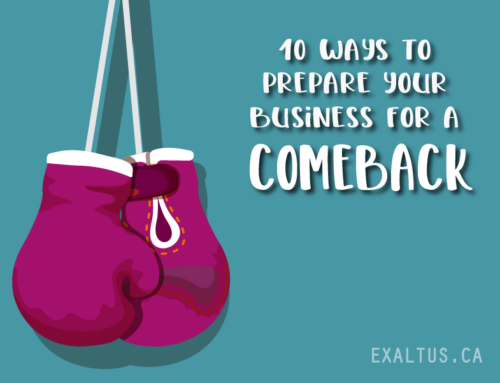
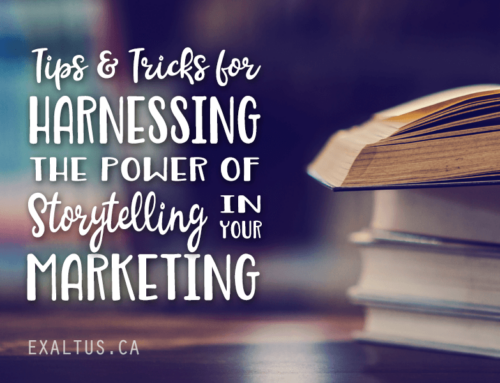

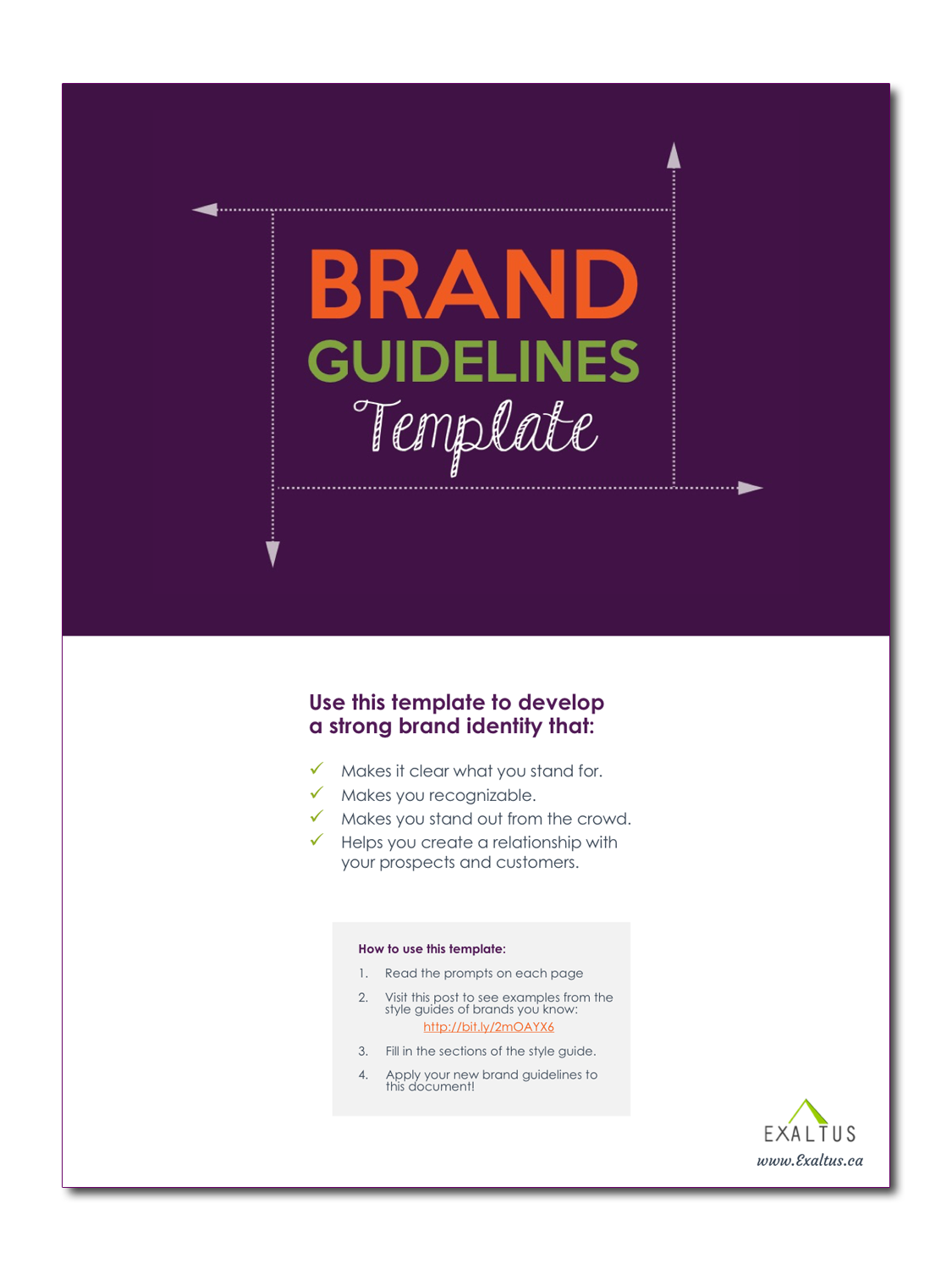

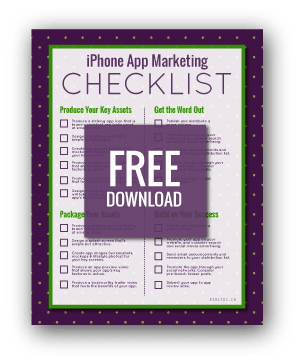
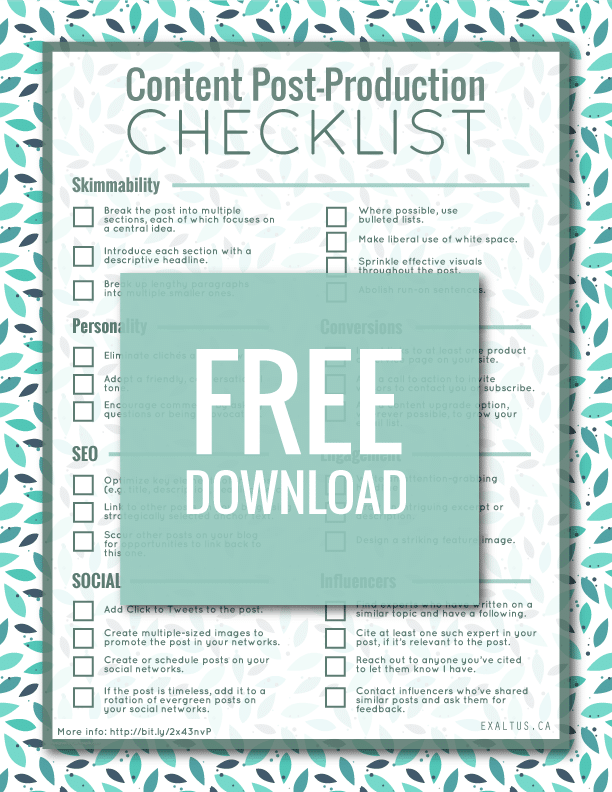
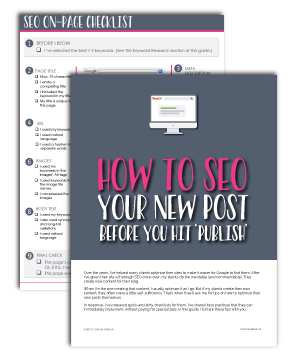
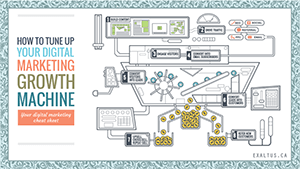
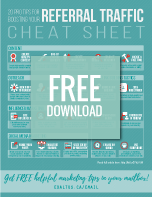
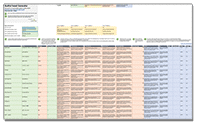
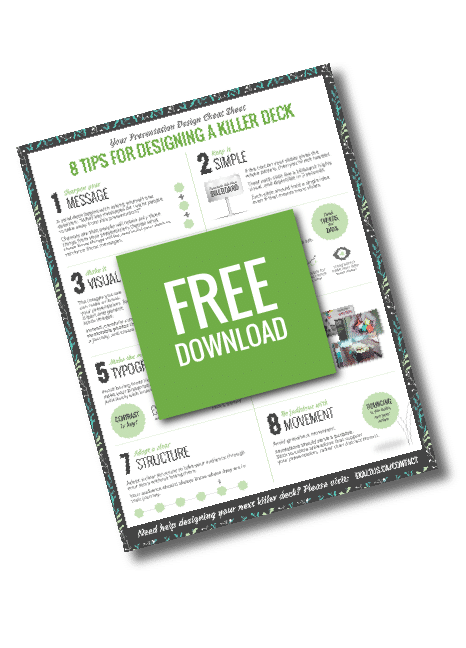
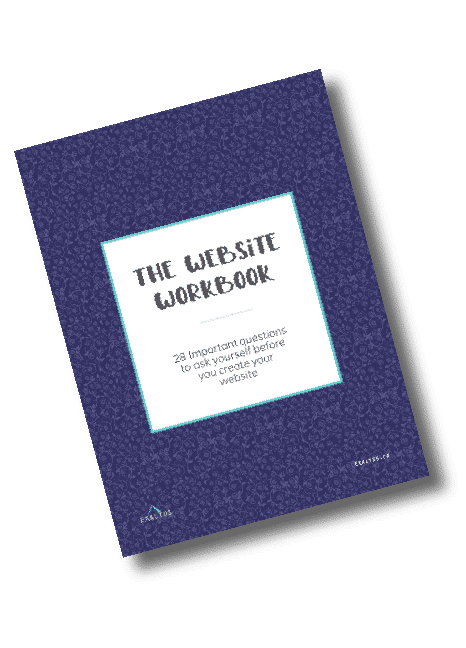
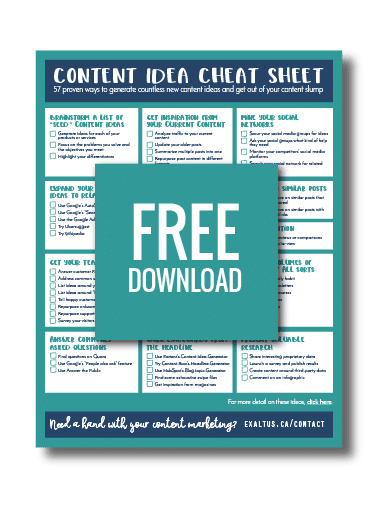
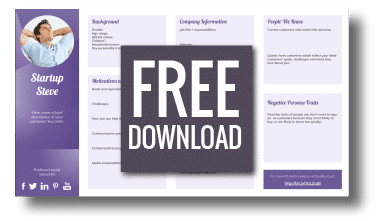
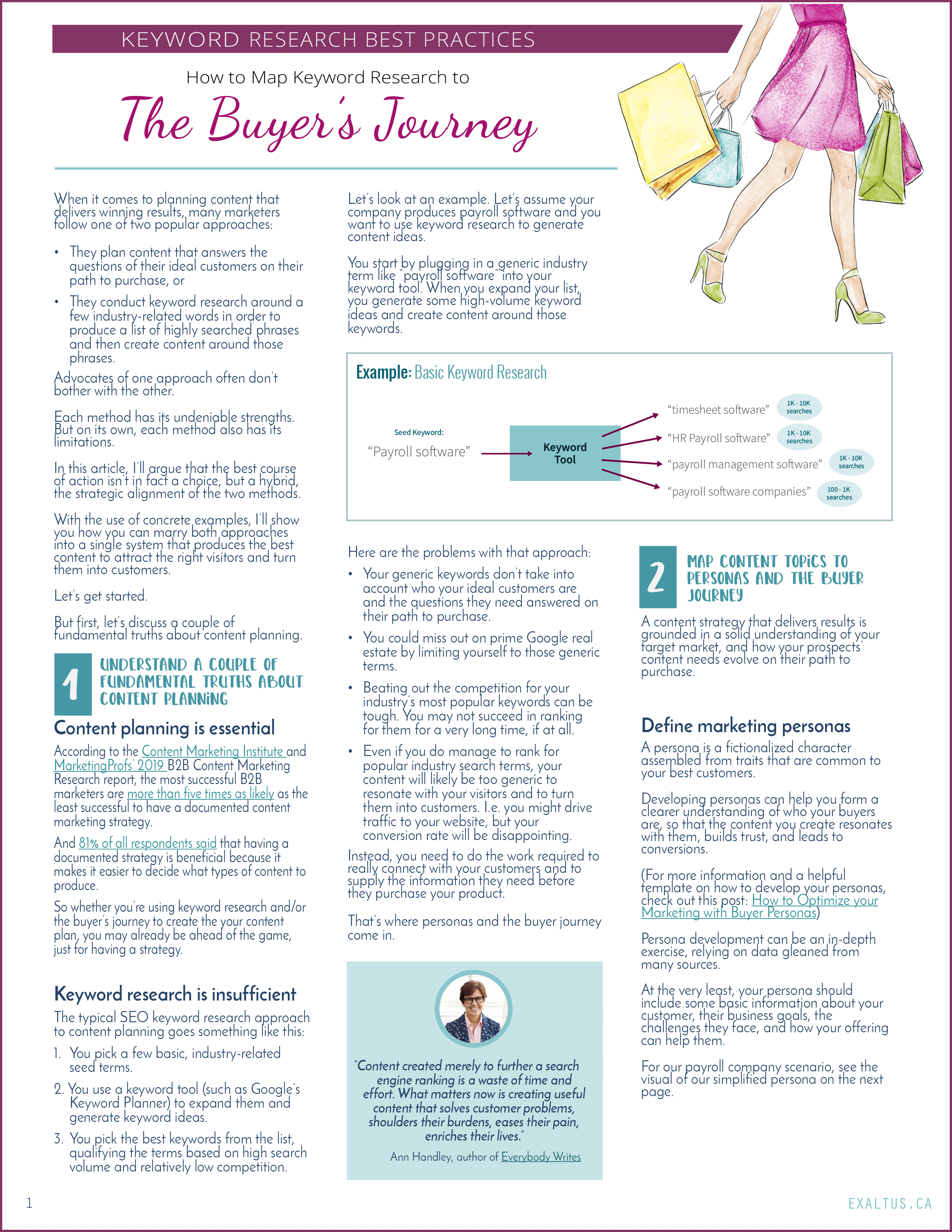
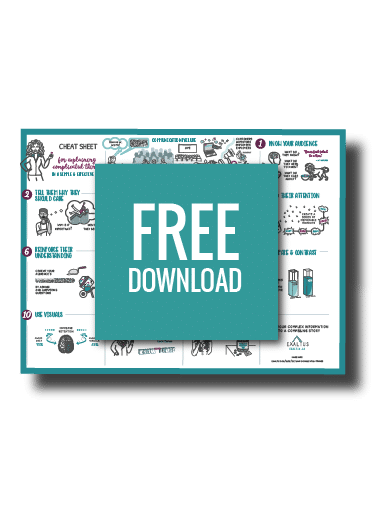
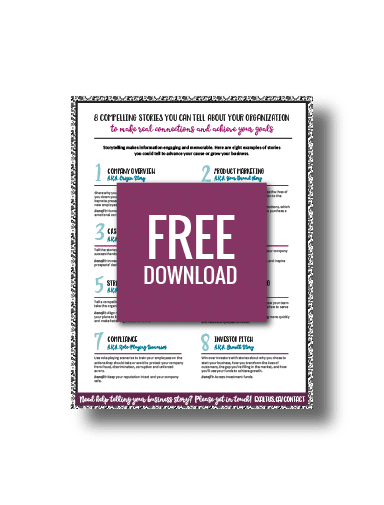

Leave A Comment